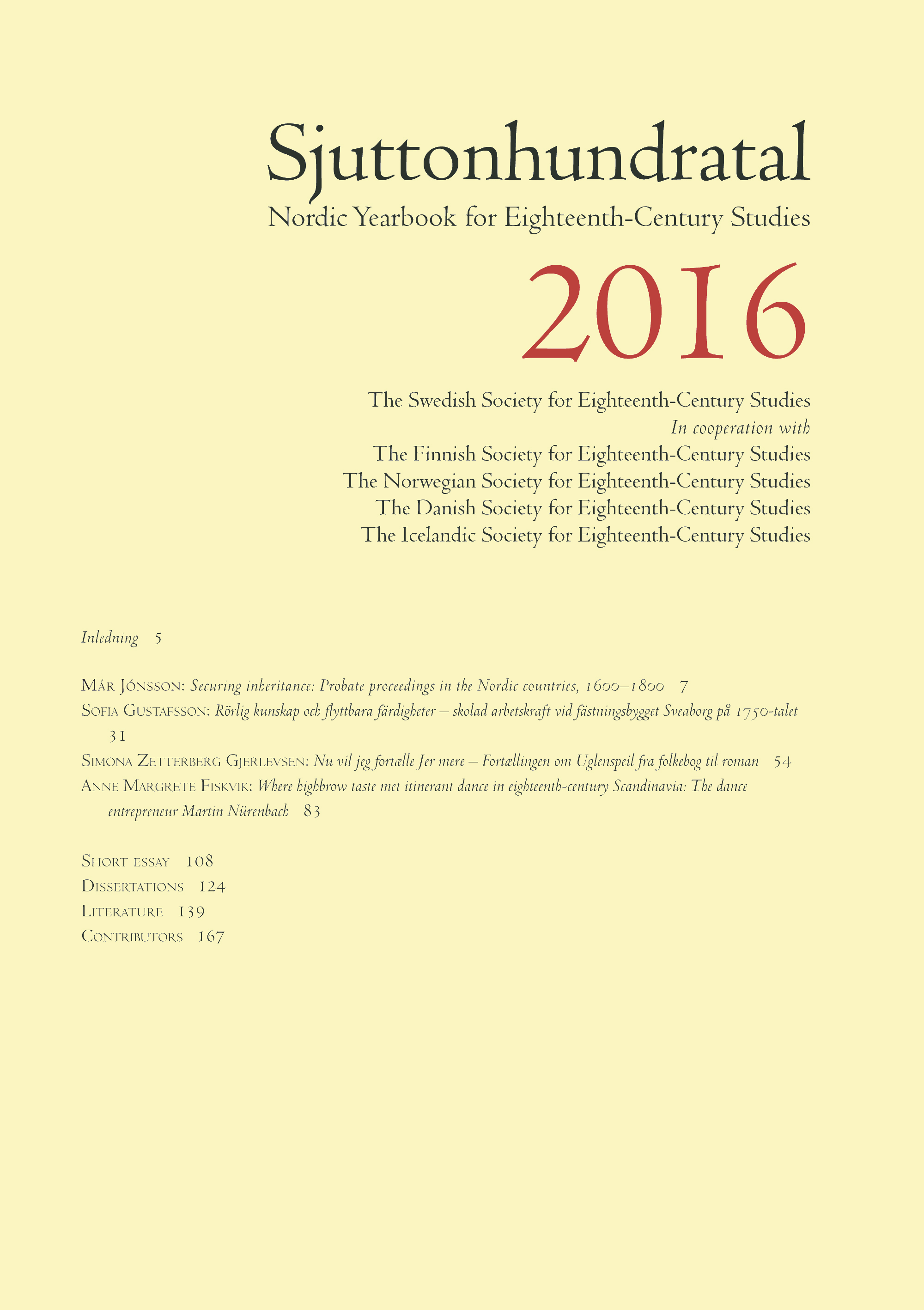Securing inheritance: Probate proceedings in the Nordic countries, 1600-1800
DOI:
https://doi.org/10.7557/4.3871Keywords:
inheritance, probate proceedings, legislation, legal history, Danske lovAbstract
Probate documents, inventories of property, and deeds of partition between heirs have for some decades been used with impressive results by historians and other scholars working on topics such as living standards, patterns of consumption, and material culture. The aim of this article is to explain divergent rules on the partition of inheritance that determined the production of these documents, as they came to be defined by legislators in the two Nordic realms in the late seventeenth and early eighteenth centuries. The Danish and Norwegian law codes of 1683–1687 stipulated that an inventory of property was only required when the heirs were minors, absent, or not the direct descendants of the deceased, whereas the Swedish Law Code of 1734 allowed for no exceptions and ordered that all inventories be held by the local courts. It did not require an officially attested deed of partition, which had been made obligatory in the Danish and Norwegian codes, valid also in Iceland and the Faroe Islands. This legislation was applied with only minor changes until late in the nineteenth century. A preliminary estimate of documentation from the seventeenth and eighteenth centuries in Nordic archives is presented in the latter part of the article, and indicates that probate records concerning almost a million individuals are preserved, the great majority from the last decades of that period. There will be great variety in the preservation of records according to place and date, but in Sweden and Finland the documentation will mainly consist of inventories of the belongings of all kinds of people, with few deeds of partition of inheritance. In Denmark and Norway one can expect a large number of probate records containing a partition of inheritance, most of them with details of the portion allotted to each of the heirs, and even the inventories, while the probate population will be more limited than in Sweden and Finland and the age distribution will be different, due to exemptions from the requirement to draw up inventories.









